Collaboration tool, Slack, recently changed its logo from a hashtag-like design, to…well there have been many colorful descriptions of what the new logo looks like.
https://twitter.com/HeyHeyESJ/status/1085613709286764544
You may think that the logo of something people largely use for workplace communication wouldn’t inspire a passionate response; you’d be wrong. But Slack took the feedback in its stride (the designers knew that 95% of people would hate the new logo).
https://twitter.com/SlackHQ/status/1085620782787633153
Airbnb faced a similar social media backlash in 2014, and GAP scrapped its logo redesign after a storm of criticism back in 2010.
So, if logos have so much potential for controversy, why don’t brands outsource their new logo design to the people they’re trying to market to?
The pitfalls and peaks of crowdsourced branding
The first thing the brand needs to decide is if it wants to hand any say in branding over to fans, followers and customers. More collaborative brands and those passionate about grassroots activism, may choose to bring outsiders into the design process. Brands that want to set their own standards and influence people with a specific vision would probably shy away from the idea.
Those brands that do like the idea need to decide how and when to bring people into the process. Should they contribute ideas from the start, or simply be presented with a final selection to choose from?
Key considerations when crowdsourcing branding
Set clear guidelines. Any design competition must have clear guidelines. These guidelines are especially important if you’re asking people to commit time and skill to helping your brand.
- Starbucks sets specific guidelines for its #WhiteCupContest – which asks customers to draw on their white cups (the winning design gets printed as a limited edition cup, and nets the winner a $350 gift card and a job). The 2014 winner set up her own business as a result of winning the competition.
Moderate submissions. Any UGC campaign must be moderated, but content that’s designed to reflect, enhance or represent the business’s brand is especially important to police. The brand’s reputation is at stake.
When a brand wants to collaborate on its branding, it’s best to do this in a controlled space, rather than on social media.
Consider a pre-selection process to ensure that offensive or choices that are not aligned with company values can be vetted. The UGC campaign should be a passion project for fans, and be focused on the brand’s values – rather than something vague and easy to mock.
- When McDonalds ran its #McDStories campaign, it wanted to showcase customers celebrating their love of the brand, instead the campaign turned into a whirlwind of mockery and criticism.
Be transparent about rules, prizes and winning qualities. Let consumers know what to expect. Guidelines should be prominent. Not just the legal Ts and Cs, but clear content guidelines should be easy to find and follow.
Let contributors know what the company values are and be clear about how the winner will be selected. For example, perhaps the brand lets fans vote on their favorite design, but will ultimately select the entry that does the best job of reflecting the brand’s values – this needs to be made clear to avoid a backlash.
By using a combination of clear guidelines, setting expectations and being open about the process, the brand can establish a system that lets fans contribute, but still gives the brand overall control over tone and design. One great way to do this is by narrowing down the submissions to a few that the brand approves of, and then putting these designs up for public vote.
Of course, even in these cases, a winning design is unlikely to be universally popular. There are plenty of examples of brands that asked its fans to come up with new product or content ideas which led to division in the fan community. However, if done right, involving consumers and fans in branding and design can be an effective way to get people engaged and to learn what people are thinking about the brand.
Read more about how The Social Element gathers social insights to bring to the table.




